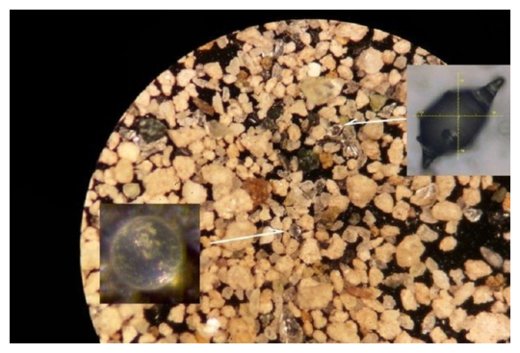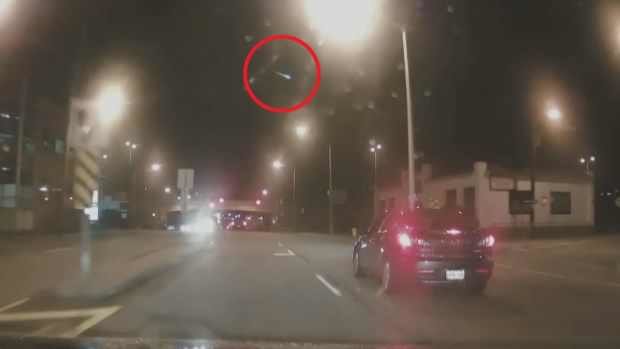
© Rensselaer Polytechnic InstituteMicrotektites as first seen in a sediment sample from the onset of the Paeocene-Eocene Thermal Maximum.
(PETM), a rapid warming of the Earth caused by an accumulation of atmospheric carbon dioxide 56 million years ago, which offers analogs to global warming today. Sorting through samples of sediment from the time period, researchers at
Rensselaer Polytechnic Institute discovered evidence of the strike in the form of microtektites - tiny dark glassy spheres typically formed by extraterrestrial impacts. The research will be published tomorrow in the journal
Science.
"This tells us that there was an extraterrestrial impact at the time this sediment was deposited - a space rock hit the planet," said
Morgan Schaller, an assistant professor of earth and environmental sciences at Rensselaer, and corresponding author of the paper.
"The coincidence of an impact with a major climate change is nothing short of remarkable." Schaller is joined in the research by Rensselaer professor Miriam Katz and graduate student Megan Fung, James Wright of Rutgers University, and Dennis Kent of Columbia University.
Schaller was searching for fossilized remains of Foraminifera, a tiny organism that produces a shell, when he first noticed a microtektite in the sediment he was examining. Although it is common for researchers to search for fossilized remains in PETM sediments, microtektites have not been previously detected. Schaller and his team theorize this is because microtektites are typically dark in color, and do not stand out on the black sorting tray researchers use to search for light-colored fossilized remains. Once Schaller noticed the first microtektite, the researchers switched to a white sorting tray, and began to find more.
At peak abundance, the research team found as many as three microtektites per gram of sediment examined. Microtektites are typically spherical, or tear-drop shaped, and are formed by an impact powerful enough to melt and vaporize the target area, casting molten ejecta into the atmosphere. Some microtektites from the samples contained "shocked quartz," definitive evidence of their impact origin, and exhibited microcraters or were sintered together, evidence of the speed at which they were traveling as they solidified and hit the ground.


Comment: Hmmm, lightning in Austria in the dead of winter? Not likely, say local meteorologists: We've seen lightning strikes light up and possibly even hit UFOs before, but this would be the first time we've seen lightning strike one of these spiraling comet-like UFOs, which have been sighted a number of times all over the world in recent years:
Reading Celestial Intentions Through the Wrong End of the Telescope: Missiles, UFOs and the Cold War
Many of these cone-shaped 'UFOs', which usually begin as bright objects crossing the sky at apparently very high altitudes, and whose tails then fan out before the main object appears to 'separate' and create a spiral formation, behave so much like rockets launched into space that we've found it all but impossible to discern them from 'UFOS' (which, we suspect, are actually comet fragments entering, not leaving, the upper atmosphere).
The very high altitudes involved conflict with the scenario presented in the above video: lightning like this, at the level of clouds, should occur far lower than any comet-like tail.
For what it's worth, the original uploader, Marie Mela, insists the video is genuine, despite frame-by-frame analysis appearing to reveal flaws in the footage.